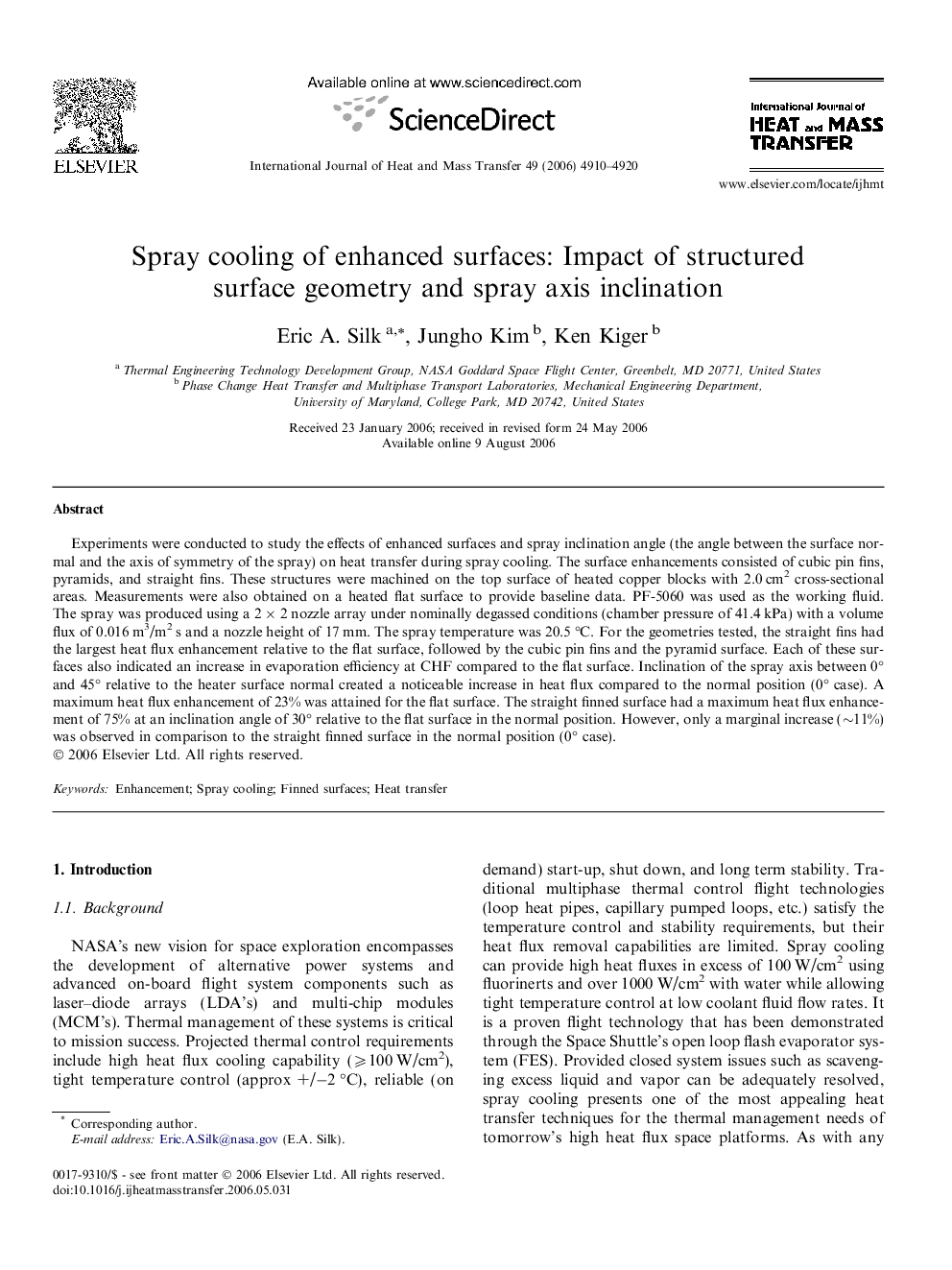| Article ID | Journal | Published Year | Pages | File Type |
|---|---|---|---|---|
| 663383 | International Journal of Heat and Mass Transfer | 2006 | 11 Pages |
Experiments were conducted to study the effects of enhanced surfaces and spray inclination angle (the angle between the surface normal and the axis of symmetry of the spray) on heat transfer during spray cooling. The surface enhancements consisted of cubic pin fins, pyramids, and straight fins. These structures were machined on the top surface of heated copper blocks with 2.0 cm2 cross-sectional areas. Measurements were also obtained on a heated flat surface to provide baseline data. PF-5060 was used as the working fluid. The spray was produced using a 2 × 2 nozzle array under nominally degassed conditions (chamber pressure of 41.4 kPa) with a volume flux of 0.016 m3/m2 s and a nozzle height of 17 mm. The spray temperature was 20.5 °C. For the geometries tested, the straight fins had the largest heat flux enhancement relative to the flat surface, followed by the cubic pin fins and the pyramid surface. Each of these surfaces also indicated an increase in evaporation efficiency at CHF compared to the flat surface. Inclination of the spray axis between 0° and 45° relative to the heater surface normal created a noticeable increase in heat flux compared to the normal position (0° case). A maximum heat flux enhancement of 23% was attained for the flat surface. The straight finned surface had a maximum heat flux enhancement of 75% at an inclination angle of 30° relative to the flat surface in the normal position. However, only a marginal increase (∼11%) was observed in comparison to the straight finned surface in the normal position (0° case).
